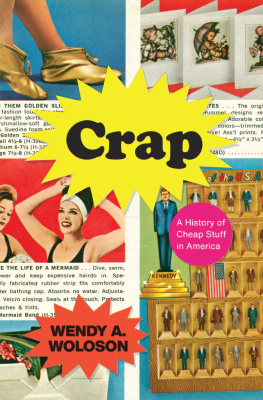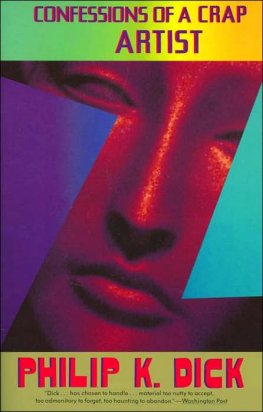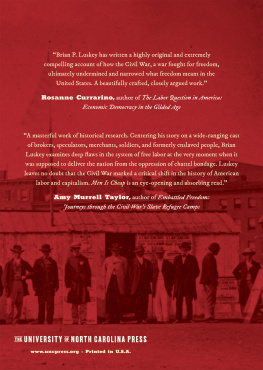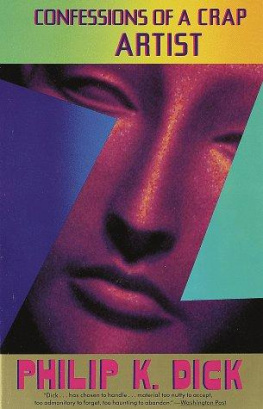Wendy A. Woloson - Crap: A History of Cheap Stuff in America
Here you can read online Wendy A. Woloson - Crap: A History of Cheap Stuff in America full text of the book (entire story) in english for free. Download pdf and epub, get meaning, cover and reviews about this ebook. year: 2020, publisher: University of Chicago Press, genre: Romance novel. Description of the work, (preface) as well as reviews are available. Best literature library LitArk.com created for fans of good reading and offers a wide selection of genres:
Romance novel
Science fiction
Adventure
Detective
Science
History
Home and family
Prose
Art
Politics
Computer
Non-fiction
Religion
Business
Children
Humor
Choose a favorite category and find really read worthwhile books. Enjoy immersion in the world of imagination, feel the emotions of the characters or learn something new for yourself, make an fascinating discovery.
- Book:Crap: A History of Cheap Stuff in America
- Author:
- Publisher:University of Chicago Press
- Genre:
- Year:2020
- Rating:3 / 5
- Favourites:Add to favourites
- Your mark:
- 60
- 1
- 2
- 3
- 4
- 5
Crap: A History of Cheap Stuff in America: summary, description and annotation
We offer to read an annotation, description, summary or preface (depends on what the author of the book "Crap: A History of Cheap Stuff in America" wrote himself). If you haven't found the necessary information about the book — write in the comments, we will try to find it.
Crap: A History of Cheap Stuff in America — read online for free the complete book (whole text) full work
Below is the text of the book, divided by pages. System saving the place of the last page read, allows you to conveniently read the book "Crap: A History of Cheap Stuff in America" online for free, without having to search again every time where you left off. Put a bookmark, and you can go to the page where you finished reading at any time.
Font size:
Interval:
Bookmark:

WENDY A. WOLOSON
THE UNIVERSITY OF CHICAGO PRESS
Chicago and London
The University of Chicago Press, Chicago 60637
The University of Chicago Press, Ltd., London
2020 by The University of Chicago
All rights reserved. No part of this book may be used or reproduced in any manner whatsoever without written permission, except in the case of brief quotations in critical articles and reviews. For more information, contact the University of Chicago Press, 1427 E. 60th St., Chicago, IL 60637.
Published 2020
Printed in the United States of America
29 28 27 26 25 24 23 22 21 20 1 2 3 4 5
ISBN-13: 978-0-226-66435-4 (cloth)
ISBN-13: 978-0-226-66449-1 (e-book)
DOI: https://doi.org/10.7208/chicago/9780226664491.001.0001
Library of Congress Cataloging-in-Publication Data
Names: Woloson, Wendy A., 1964 author.
Title: Crap : a history of cheap stuff in America / Wendy A. Woloson.
Description: Chicago ; London : The University of Chicago Press, 2020. | Includes bibliographical references and index.
Identifiers: LCCN 2019054880 | ISBN 9780226664354 (cloth) | ISBN 9780226664491 (ebook)
Subjects: LCSH: NoveltiesUnited StatesHistory. | NoveltiesSocial aspectsUnited States. | Consumption (Economics)Social aspectsUnited States. | Material cultureUnited States. | United StatesCivilization.
Classification: LCC TS2301.N55 W65 2020 | DDC 688.7/260973dc23
LC record available at https://lccn.loc.gov/2019054880
 This paper meets the requirements of ANSI/NISO Z39.48-1992 (Permanence of Paper).
This paper meets the requirements of ANSI/NISO Z39.48-1992 (Permanence of Paper).
To David Miller
100% quality
Americans have surrounded themselves with crappy things: consumer goods that are typically low priced, poorly made, composed of inferior materials, lacking in meaningful purpose, and not meant to last. Such crap has insinuated itself into just about every aspect of daily life, filling countless kitchen junk drawers and clotting garages and basements across the nation. So ubiquitous, crap is nearly invisible, like white noise in material form.
Crappiness is not just a material condition but a cultural one as well: an often exuberant and wholly unapologetic expression of American excess and waste. Craps creep into daily life might seem like a new thing, but it began centuries ago. Over time, Americans have decidedas individuals, as members of groups, and as a societyto embrace not just materialism itself but materialism with a certain shoddy complexion. Living in a world of crap was not inevitable. But for various reasons, Americans forged consuming habits that are now ingrained in the nations very DNA. In an age of material surfeit, we continue to spend money on things we do not need, often will not use, and likely do not even want. Why? This book aims to understand Americans ongoing and often fraught love affair with crap by telling the larger and longer story about what has motivated us to consume, and how it has shaped who we are as a nation of consumers today.
One of my favorite Twilight Zone episodes depicts the dynamic of crap better than almost anything else. In One for the Angels, affable street seller Lou Bookman tries to distract Mr. Death from taking the soul of a beloved neighborhood girl by giving him the sales pitch of a lifetime. Bookman draws Mr. Deaths attention to an array of goods that he brings forth from his traveling case, like a magician pulling rabbits out of a hat. Thanks to Lous persuasive skills, Mr. Death, at first an aloof and skeptical customer, becomes utterly entranced. The peddlers neckties are made not of polyester but rather the most exciting invention since atomic energy, a fabric that would even mystify the ancient Chinese silk manufacturers. His sewing thread is even more enthralling: a demonstration of tensile strength... as strong as steel yet as fragile and delicate as Shantung silk... smuggled in by Oriental birds specially trained for ocean travel each carrying a minute quantity in a small satchel underneath their ruby throats. It takes 832 crossings, Bookman exhorts, to supply enough thread to go around one spool. Bedazzled, Mr. Death frantically rifles his pockets for cash, shouting, Ill take all you have! (
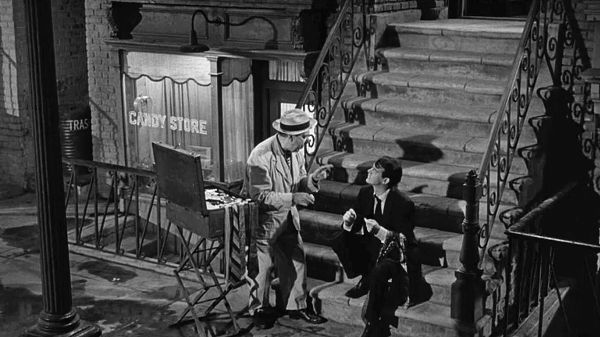
Figure 0.1. Lou Bookman exhorts Mr. Death on the demonstration in tensile strength of ordinary sewing thread. Still from the episode One for the Angels, The Twilight Zone, originally aired October 9, 1959.
Like Mr. Death, Americans have approached the marketplace of goods with a combination of world-weariness and openmouthed credulity. The promise of endless supplies of new things, ever cheap and accessible, has captivated and enchanted. And the risk is low, since any one thing doesnt seem to cost all that much. Yet the result is a material world of ephemeral, disposable, and largely meaningless goods. It is a world of crap, and it has very real costs, ranging from the material to the mental, the environmental to the emotional.
The encrappification of America dates back centuries. While there were, undoubtedly, once village blacksmiths who forged brittle nails, farm women who adulterated their butter, and tailors who cut corners, these were the exceptions. Most things were made by skilled and reputable hands working with good intentions, supplying the needs of people within local communities. The consumer revolution, which began in the mid-1700s, changed all that. Responding to the increasing demands of farther-flung and more anonymous and democratized markets, cabinetmakers contrived faux finishes to simulate exotic woods and intricate inlays, metalsmiths discovered how to make plated and imitation wares, and jewelers began creating glittering gemstones made of paste backed with foils. Even then, however, ersatz goods were still only accessible to the elite and fortunate strivers because they still had to be crafted by hand. And these items were often prized because they were clever simulations, allowing people to purchase more than they truly needed and to show material excess off to others.
But crappy goodsinartful and deceptive simulations, shoddily made and not meant to lastfollowed very quickly. Inferior things became desirable for probably as many reasons as there were people to buy them, including sheer accessibility and affordability, the desire to emulate friends and impress neighbors, and a simple thirst for novelty. Crappy goods would not have become popular, however, without the countless slick-tongued persuaders who helped sell them. These early pitchmen, as essential to the rise of the nation as yeoman farmers and independent artisans, descended from a long line of itinerant salesmen who, by the late eighteenth century if not earlier, were pulling beguiling things from their packs with showmens flourishes. Though theyve long vanished from the commercial landscape, their legacies nevertheless remain. The siren songs promising untold treasures at bargain prices call to us from the jumbled stock of dollar store shelves, the seemingly infinite listings on sites like eBay, countless infomercials, and, once, the Lou Bookmans and Willy Lomans pounding the pavement looking for their next opportunity to make a pitch.
As soon as Americans could get their hands on cheap stuffoften aided by all those roving peddlers and pitchmenthey began encrappifying their lives, tentatively at first, and then with gusto. Not long after the American Revolution domestic markets became inundated with goods from overseas. Great Britain dumped the majority of these items on Americas shores, and many of them were inferior in some way: remainders; damaged goods and knock-offs; the unfashionable and outmoded; things dyed with fast-fading fugitive colors and constructed with less durable materials; myriad items that had little purpose and likely would not last.
Next pageFont size:
Interval:
Bookmark:
Similar books «Crap: A History of Cheap Stuff in America»
Look at similar books to Crap: A History of Cheap Stuff in America. We have selected literature similar in name and meaning in the hope of providing readers with more options to find new, interesting, not yet read works.
Discussion, reviews of the book Crap: A History of Cheap Stuff in America and just readers' own opinions. Leave your comments, write what you think about the work, its meaning or the main characters. Specify what exactly you liked and what you didn't like, and why you think so.

